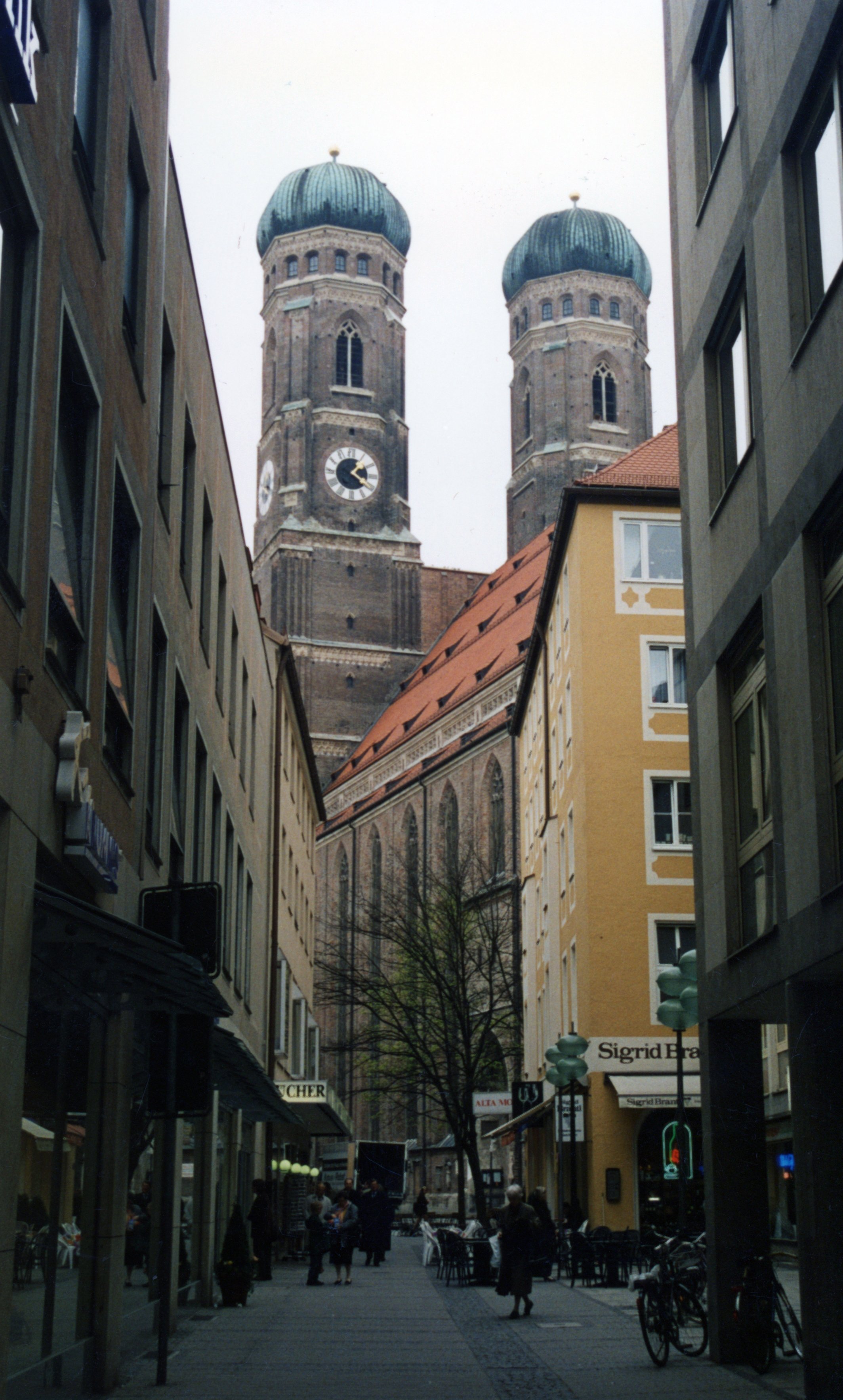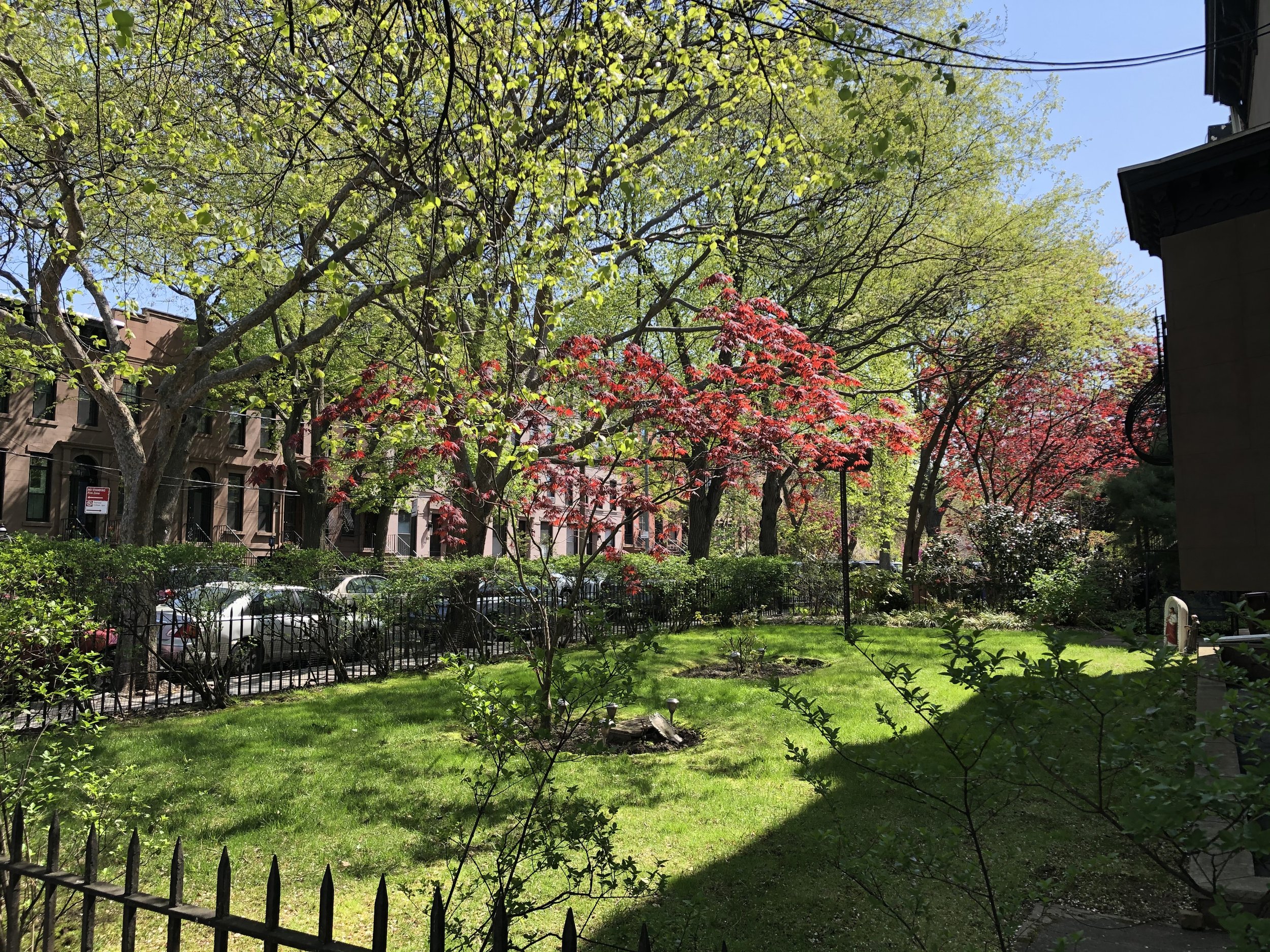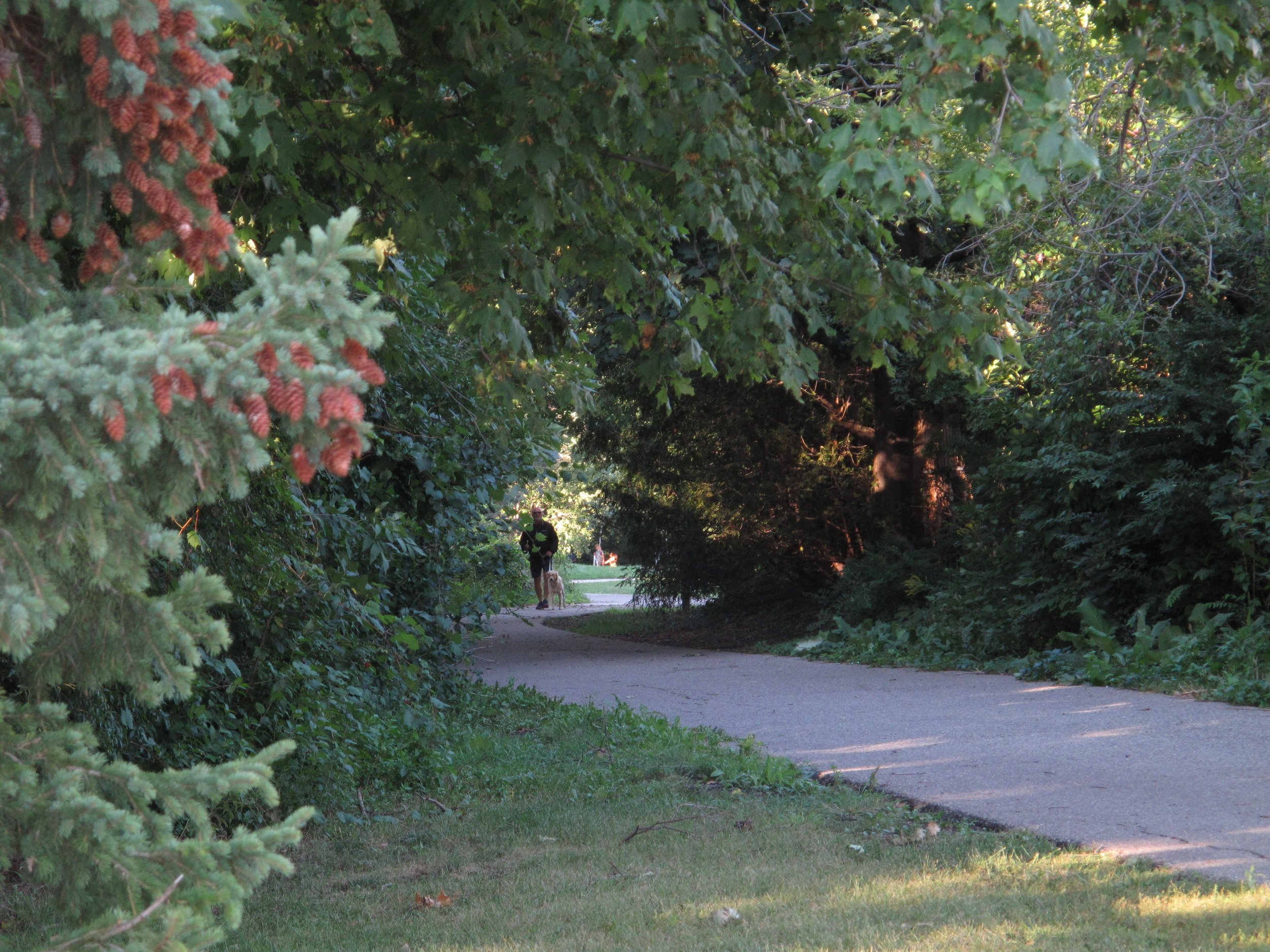Street (not Highway) Design
My understanding of the difference between #streetdesign and #highwayengineering. They share many principles and elements, but the design approach is fundamentally different.
—Michael King
Introduction
After being driven for decades by motordom, street design is emerging from the ditch.
Street design was once the province of citizens, people who built streets as integral parts of cities. Street grids were laid out on tried and true notions of walkability and legibility. Streets were designed to successfully integrate travel and trade, buildings and markets, throughput and staying put. Then along came motorized vehicles and streets became mini-highways.
In the last decade a number of street design manuals have been proffered which seek to establish rules and rigor to the practice of street design. Street design is a cousin of highway engineering, but with distinct differences. Speeds are lower, which allow greater flexibility. Streets must accommodate multiple modes, as opposed to a mono-modal highway. Streets must speak to adjacent structures, and vice-versa.
Street design occurs building-in; highway design is center-line-out.
A Brief History of Streets
Streets have existed for millennia, and their design until the Industrial Revolution was largely a community affair. Cities, towns and neighbourhood were laid out according to various principles: religious, health, economy, organization, environment, security. Streets were seen and designed as equal parts thoroughfare and location. They were meant to allow passage and be places of commerce, living, and “staying”. Some streets, such as alleys and cul-de-sacs, had no “through” function other than to provide access. That access was either limited by the physical usage of the streets (storage, outdoor shops and workrooms) or by legal restrictions.
Chinese cities were organized according to danwei, such that there was little reason for people to travel beyond their own self-constrained work-unit world. Roman cities were largely organized along the dual Cardo (north-south) and Decumanus (east-west) axes. Anglo-Saxon cities typically consisted of a series of squares, while Latin cities preferred courtyards and walls. Much of this had to do with climate. The Manhattan 60 metre grid is based on the width of docks at either end of the street.
Islamic cities followed Shariah law which dictated a “network of narrow winding streets consisting of public and private and semi-private streets and cul de sacs.” [Rabah Saoud. "Introduction to the Islamic City", 2001, accessed 2014.06.22] “One essential characteristic of the traditional street pattern is the ability for people, particularly men, to meet in a series of unstructured encounters. It is important for Western designers to understand that these open areas are effectively a series of majaalis [meeting rooms] arranged in a hierarchical manner flowing from the privacy of the interior of the house to the larger public spaces...” [John Lockerbie. "An approach to understanding Islamic urban design", accessed 2014.06.22]
Streets have been designed and used for a number of purposes. They were built for ceremonies and parades. Wide streets were introduced to emit light and air into cramped quarters in an effort to improve health. Calle Amsterdam in Mexico City was designed as a horse racing track. Now the central portion is a walkway and the outside is used by motorized vehicles. The Harlem River Drive in New York City was once a horse race track, complete with stadium seating. Now it is a highway.
For the most part, streets historically were the province of those afoot. While goods were wheeled in carts and the wealthy had horses and chariots, most people walked. Charles Dickens novels are filled with people perambulating, with a ride in a horse-drawn cab a rare treat. Vehicles also appropriated prime mercantile space, as much business was done out of doors before electricity. “...congestion in the streets of Rome...led Julius Caesar to ban carts and chariots from the city between sunrise and sunset. The Forum of Pompeii could only be used by pedestrians and the street leading to the Forum ended as cul-de-sacs roads.” As late as 1911 wheeled traffic was forbidden between 11.00 and 21.00 in downtown Buenos Aires. (Hass-Klau, 1990)
Streets were largely un-demarcated space, with few sidewalks. “Pavements [sidewalks] protected pedestrians from wheeled traffic and were used as long ago as Roman times, but had been forgotten until the late seventeenth century. After the Great Fire of London in 1666, pavements were provided in all the newly constructed streets. In France and Germany pavements were not known until the middle of the eighteenth century, and then only in the ‘better’ streets. Haussmann and Alphand included pavements in all streets in Paris.” (Hass-Klau, 1990) The sidewalk-like facilities had more to do with construction techniques, drainage, and storm water management, than pedestrian safety. To this day, many “sidewalks” are simply linear markets.
In sum, streets have historically been located and designed following a number of principles and precepts which carefully balanced all the competing uses of the street, and most of those uses occurred at walking speed.
Streets slicing through #Barcelona, Spain
Monumental street for parades, #Vientiane, Laos
A median that was once a horse track, Condesa, #MéxicoCity, México.
Sidewalk-like construction technique used to protect house from rainwater, #Copan, Honduras.
Three versions of “sidewalks”: #Bangkok, Thailand; #Toledo, Ohio, USA; #Cairo, Egypt.
The Standardization and Motorization of Streets
Streets begin to change during the Industrial Revolution. As with many aspects at the time, their design began to be standardized, and space was given over to mechanized transport: horse-drawn carts on rails, trolleys, bicycles and, cars. “By the end of the nineteenth century, attempts at controlling traffic by way of developing a street hierarchy were developed in the most sophisticated way by German engineers and planners.” (Hass-Klau, 1990) Reinhard Baumeister’s 1876 book Stadterweiterungen in Technischer, Baupolizeilicher und Wirtschaftlicher Beziehung (Town Extensions in their Technical, Surveying and Economic Relationship) was perhaps the first effort to codify street design principles. It called for street widths based on motor vehicle traffic volume, a street hierarchy, different lanes and/or carriageways for fast and slow traffic, a standard ratio between carriageway, landscaping, and sidewalk, and ring roads.
As streets filled with mechanized vehicles, and their higher speeds, efforts were made to simultaneously clear space for them to operate, and protect others. It was fairly easy to manage rail-based transport as long as others could be kept off the rails. Harder were vehicles that could be steered, such as bikes, cars, and trucks. “Lanes” were created for slower, faster, larger, and smaller vehicles. Pedestrians began to be confined to the “sidewalk”. Plazas were given over to roundabouts and parking.
Another approach was to physically separate the various modes, one that gain credence with futurists and modernists who sought to do away with streets in their entirety. Trains were elevated or tunnelled. Pedestrian bridges and underpasses were built. The ‘New Walk’ in Leicester, England was a mile long, 9 m wide pedestrian road on which people could walk from the suburbs into town. (Hass-Klau, 1990)
In addition to street design, the street network was challenged. No longer was it sufficient to have a seemingly meandering network of lanes (albeit purposely placed). “The French architect H. Descamps designed his Cité moderne (published 1927 and 1928) as a new town consisting of a network of 100 m wide streets which were laid out in blocks of 500–1500 m distance.” (Hass-Klau, 1990) The Indian new town of #Chandigarh was organized using a 800 m x 1200 m grid. This equals a 10 x 15 minute walk - typically a five minute walk has been used as an organizing principle.
A system called functional classification was put in place in order to codify and streamline the building of roads (and ultimately streets). Functional Classification organized roads hierarchically, dichotomously and mono-modally. Roads were viewed as vines, with cars as ants climbing up the arterial stalk onto a collector stalk and ultimately a local leaf. Except for access to adjoining properties, other uses were either ignored or shunted aside.
Policies on minimum standards were developed to guide road production. These were often based on tenuous grounds, even though they were listed as scientific. The classic example is the story of the dead dog. When attempting to determine how severe a vertical curve (a hill) could be, engineers developed a standard called stopping sight distance. The idea was that a driver should be able to see a dead dog in the road and be able to stop in time. No matter that the history of crashes with dead dogs was practically non-existent, or that a crash with a dead moose or cow would be much more deadly, or that the height of drivers depended on the vehicle. The equation was ultimately altered because it was levelling so many hills became cost prohibitive. (Hauer, 1999) To build a safe highway is an admirable goal, and there is nothing to suggest that highways built in the 20th Century were not as safe as they could be; nevertheless, issues arose when the ‘standards’ used to build highways were transferred to city streets.
With the rapid suburbanization of cities in the post-war era came a diffusion of funding and control. Especially in the United States, money was routed through the states, which then dictated road design. Losing population to white flight and federally funded exurban developments, cities were desperate for development and gladly accepted urban highways and roads, partially as urban renewal. “To a surprising – and perhaps disturbing – extent, the urban freeways’ capacity, routing, geometrics, safety provisions, and much else were significantly shaped by the internal logic of the transportation finance system.” (Brown 2009) As with most things, it is best to follow the money.
Changes to the street can be viewed through the lens of the epic struggles of the era: the rise of the middle class, capitalism and socialism, zoning, the elevator and skyscrapers, the end of the aristocracy, world wars, racial integration and suburbanization. “The motto ‘Free travel for the free citizen’ was accepted by many [German post-war] transport experts and urban planners far into the 1970s and 1980s. This ideology has to be understood as the outcome of the belief in the ‘free market economy’...” (Hass-Klau 1990)
In sum, the design of street networks and streets themselves for the 100 years from 1876 until the early 1970s was streamlined and repurposed primarily for mechanized transport, ultimately the motor car. The new concepts were largely untested but proffered as ordained.
Physical ramifications of highways and motor vehicles: #Aachen, Germany; #Guangzhou, China; #WichitaFalls, Texas, USA [courtesy Ross King]
The middle of this superblock is essentially given over to parking and access to parking, #AbuDhabi, UAE.
Street crossings, or lack thereof: #Ljubljana, Slovenia; The “Rocky Steps” in #Philadelphia, Pennsylvania, USA; #Jaipur, India.
Re-emergence of Street Design
Along with other social changes in the 1960s and 1970s, street design (or rather streets designed as highways) was held up for inspection and introspection. The oil embargo of the early 1970s focussed many an eye on western dependence on a mono-modal transportation system based on fossil fuels. A series of alternate (or rather more historically accurate) approaches were developed, and the whole ‘science’ of road building was questioned. “For decades, under the influence of transport engineering and our own architectural conceptions, we have thought of the city as a system of urban places linked by movement channels. By implication this has separated movement from place. It is now clear that movement is intrinsic to place, and the life of places is largely a function of how it is embedded in the larger scale spatial pattern of the city and movement potential it creates.” (Hillier 2006)
The use of streets by people not driving emerged as a serious study. “It is instructive to remember that streets used to be different than they are today. Modern ‘improvements’ were not universally embraced when they were first put in place … in the 1920s and 1930s pedestrians had to be trained to cross at intersections and wait at traffic signals.” (McShane, 1994) Safety concepts such as Sweden’s Vision Zero (1997) were introduced to refocus the profession on goals other than driving.
Reacting to the somewhat degraded condition of cities and their design, Kevin Lynch organized city design into six methods. (Lynch, 1984) They parallel nicely with street design. Street networks need structure, a framework and sequencing. Street design needs to provide for place as well as throughput, the streets are a system, and prototypes are essential to advance innovative design.
Mental Maps
Structure
Framework
Sequence
Stasis Design
Places
Systems
Prototypes
Stephen Marshall developed a street network system which combined aspects of the common grid with the hierarchy of functional classification, all the while including other aspects such as context and urban design.
Elements of an integrated street-based constitutional code (Marshall 2004)
Present day researchers are addressing the complexity of modern city and street design in earnest. This addresses the need for evidence-based decision making.
“Urban sprawl is significantly associated with increased EMS [emergency medical services] response time and a higher probability of delayed ambulance arrival...This probability increases quadratically as the severity of sprawl increases...” (Trowbridge 2009)
“It appears that drivers indeed take cues from elements of the roadway and roadside environment to decide how fast to drive and these cues are independent of the posted speed limit..." (Ivan 2009)
"Walking is most strongly related to measures of land use diversity, intersection density, and the number of destinations within walking distance.” (Ewing & Cervero, 2010)
In sum, the last two generations have seen an inversion of highway design and a re-emergence of street design. The negative effects of an automobile-dominated society, from climate change to dystopian environments to ill health, are well documented. Newer guidance is attempting to right this imbalance. It is more holistic, iterative, and accepting of the many uses of a street.
Street design is not sexy
The men and women who in an earlier era might have been ones to take up street design were themselves infatuated by the machine, and saw the car as the logical outgrowth. Houses were seen as “machines for living”. Helicopters and airplanes were thought to be the future of intra-city travel, aka the Jetsons. By the 1990s “...the isolated pursuit of architectural form had become both plausible and respectable in schools and in practice.” One by-product is architecture ignoring “…what often appear[s] to be overwhelming related transportation problems.” (Safdie 1997)
Designing streets is inherently not sexy. It involves drainage, traffic control, passive observation, and political chutzpah. There is little room for swooping illustrations and feats of technical brilliance. The public must be dealt with. There are typically no ribbons for politicians to cut. Starchitects need not apply. But, as we move away from the Fountainhead model, we find that a good street is a fundamental building block of a good city. It sets the stage for a higher quality of life, one which is safer, more productive, and longer lasting.
Innovative Street Design Principles and Practices
In the article “Ideas for Improving Science Education in the U.S.”, Mitzi Montoya, Dean of the College of Technology and Innovation at Arizona State University, spoke of training engineers to solve problems, as opposed to blindly applying standards.
“Imagine the difference …between an engineering student who theoretically designed [a street] with wonderful calculations for a great grade versus one who actually built [a street] by iterating through various challenges connecting principles and formulas to reality.” [@NYTimes, 2013.09.02. The quote used elevators as an analogy, which I have substituted with streets.]
This last section articulates a number of principles and practices found in the newer, more innovative street design manuals, be they called complete streets, context-sensitive solutions, traditional neighbourhood design, traffic calming, resilient streets, or sustainable design. It builds upon the science and research of the foregoing (that which has been held up to scrutiny), includes the ‘messiness’ of urban design, and seeks to direct the discipline towards a more inclusive end. The principles and practices are not linear, nor can they be. Design is iterative, and street design is no less so.
Note the distinction between street design and highway design. The former concerns relatively low speed, multi-modal, multi-use, essentially shared spaces. The latter is for high speed expressways and the like. This paper applies to streets.
Eight Main Concepts
1) Clear policies and compliance. There is so much decision-making in the design of a street, it is incumbent to have clear policies on the ultimate direction of the design. Compliance with those polices must be similarly transparent.
a) Performance measures and goals. Most past design guidance amounted to standards, which have been followed almost slavishly. In the city, performance measures are a better way to evaluate design, as there may be numerous techniques to gain similar results. Crash reduction and mode shift are two primary goals.
b) Pedestrian first. The various modes on a street (buses, bikes, cars, people) are in no way egalitarian, and to ‘balance’ them is duplicitous. One must prioritize safety and protect the more vulnerable users, both legally and physically.
c) Vision zero. It is odd that street design does not inherently have a vision zero policy. Other forms of transportation do. The head of the train company is woken up in the middle of the night and goes to the scene of the wreck whenever someone is killed in a train wreck. The designers and operators of the road network need to be similarly accountable for their work.
d) Transparency. A change occurred in the transportation industry when design manuals, codes and policies were first put on-line. It put an end to subterfuge, as the public could look it up themselves. This is a good trend in an open society.
2) Non-prescriptive street design guidance. There are millions of variations of streets, from size to use to length to look, and it is impossible to dictate all the various scenarios. The key is to provide guidance for deciding critical issues.
a) Street design occurs ‘outside in’, not ‘centreline out’. The latter is how highways are designed – a line is drawn on a map and the road is built from it. In cities, the buildings are typically there (or planned to be there) and the design of the street occurs by means of division (not addition).
b) Assemblages, not minimums. Streets are a collection of parts, an assemblage. ‘Minimum’ requirements are unhelpful, as compromises are always being made to match the context. Also, in practice minimums usually become maximums.
3) Three physical properties of safety: separation, protection, and reduction. If two objects are separated, either temporarily (traffic signal) or physically (barrier), there is little chance of conflict. If the same two objects are encased in padding (helmet, air bag), impact will be lessened. If speed or weight is reduced, either absolutely or the differential thereof, the impact will be lessened.
a) Crashes not accidents. Collisions between motor vehicles, bicycles, pedestrians, street cars, busses, and other things in the street happen with regularity. To treat them as random occurrences (accidents) does them a disservice and negates the opportunity to study them in detail and take corrective action.
b) Crash severity. Much of the study of crashes resolves around absolute numbers, which make nice headlines. Nevertheless, the cost and impact of a fender bender compared to a fatality can be 1300:1.
4) Five measures of a street: throughput, access, context, economy, priorities. Streets serve many masters and all must be accounted for.
5) Street network and street design overlap. Streets and their intersections can never be viewed in a vacuum. They are part of a web of interaction which must be respected.
6) Size does not equal traffic. The size of a street is disassociated from the amount of traffic it can or should have. Narrow rights-of-way may process many vehicles, while wide boulevards may be prime locations for anything but vehicles. A wider road is never justification for more traffic.
7) Parking is a proxy for driving. If one cannot park, one is less likely to drive. [The TOD Standard. Institute for Transportation and Development Policy, 2014. @ITDP]
8) Embrace the politics. In that a street is a public good, its design must occur in the public realm. As such, there is a political component, for better or worse. Safety, liveability, transportation and economy are good subjects for political party platforms. I once attended a town hall hosted by the Green Party in Germany to discuss traffic calming.
Ten Design Features that Impact Street Design
View corridors enhance legibility and wayfinding.
The church steeples viewed from a distance let you know where you are. #Munich, Bavaria, Germany
2. Ratios, edges and frontages all contribute to the look and feel of the street and impact usage.
The “gardens” of the Carroll Gardens neighborhood provide color, scale, and softness to the street. #Brooklyn, New York, USA
The porticos on either side of this street provide rhythm and mystery. #Guangzhou, Guandong, China
3. Pedestrian networks exist in their own realm (sometimes mirroring the street network and sometimes following their own logic). They are fundamental aspects of the entire circulation network and must be respected, especially where they cross other networks such as roads and railroads.
A series of paths that wind their way with a residential neighborhood, connecting to schools and shopping. #Mississauga, Ontario, Canada
A path between two streets. #Bogotá, Colombia
4. Walking streets are necessary parts of the circulation network, especially in hotter climates.
This narrow street with trees doubles as a garden. #MéxicoCity, México
5. Shared space exists everywhere. One could argue that all streets are shared space, especially intersections. Designers ignore them at their peril.
Friday prayers extend outside the mosque. Drivers simply stop. #AbuDhabi, UAE
6. Interstitial space (that between the sidewalk and carriageway) is the space that is the most ambiguous. It is the area where all the non-walking and non-driving activity occurs. It must be malleable in both time and space, as the usage of a street will likely change over the course of the day or lifetime.
The area outside this transit station has been re-purposed for people walking and boarding vans. #AddisAbaba, Ethiopia
7. Medians serve a number of purposes, from traffic dividers to gardens to promenades.
A median as garden. #BocaRaton, Florida, USA
This median protects people (and their children and dolls) crossing the street. #KansasCity, Missouri, USA
8. Boulevards provide potent place in cities
This boulevard is wide enough for vehicle traffic, sidewalks, a median path, trees, kiosks, al fresco dining, transit, etc. #Berlin, Germany
9. Gates and entrances are important markers in a city and must be respected and embraced
A street passing through the ancient city gate. #Ahmedabad, Gujarat, India
10. Plazas serve many functions, from meeting places to quiet respites. They should rarely be used for automobile storage.
A quiet place to sit and text. #BuenosAires, Argentina
Updated from a paper written in 2014 for the Future of Places Conference in Buenos Aires, @FutureofPlaces.
All images by the author except as noted.





























